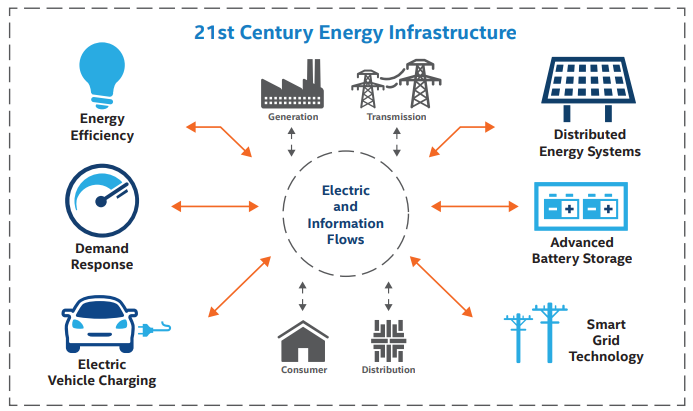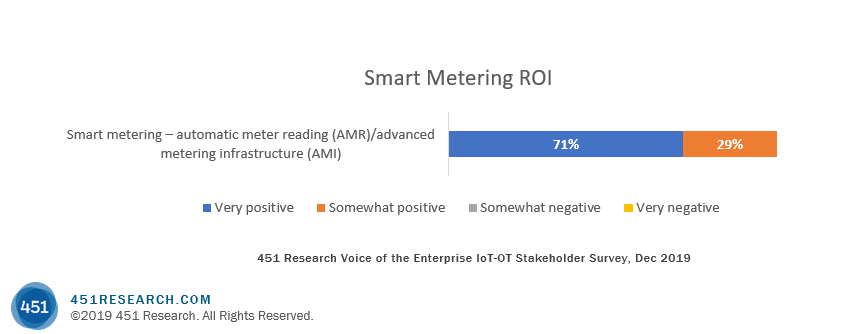Motivators for IoT Adoption in Utilities
Much has been written about why utilities have been slower to adopt new technologies but there are good reasons utility leadership has employed a measured and reliable pace of new IoT project implementation and IoT adoption. Regulatory pressures to keep rates low, unproven technologies, staffing shortages and the costs to implement wide-scale projects have all contributed to slower adoption rates across the industry. However, the utility industry is poised to increase IoT adoption by 20% by 2025 - and these investments are now able to be quantified and thoroughly vetted to ensure a positive return for utilities undertaking these projects. This post explores the top motivators driving the growth of IoT adoption in utilities.
Recognizing Operational Efficiencies
Arguably, one of the most readily realized benefits of IoT installations for utilities is in managing operating costs. According to the IDC, recognizing operational efficiencies is the leading driver of success management for utilities. As pressure mounts on utilities to find new ways to reduce costs as overall demand declines, a number of new technologies and strategies have emerged to meet this need.
Grid Management
- Advanced sensors known as Phasor Measurement Units (PMUs) allow operators to better assess grid stability
- Advanced digital meters give consumers better information about outages and automatically report outages back to the utility
- Relays sense and recover from faults in the substation automatically, reducing outages and the need for employee intervention
- Automated feeder switches reroute power around problems, improving overall SAIDI scores and reducing outages
Asset Management
- Edge computing technologies and smart field sensors provide real-time data of the situation in the field - this situational awareness allows utilities to determine the exact resources needed to make repairs
- Real-time monitoring of remote equipment allows for preventive maintenance and gives insight into the normal operational behavior of brownfield equipment and devices - this data enables proactive management of these assets, preventing breakdowns or preparing the way for additional investment to replace aging equipment and preventing future outages
- Impacts on utility employees are also included in this effort, allowing utilities to better monitor and mediate risk as well as reduce in-field repair times and costs through proactive asset management
Demand - Generation and Balance

Intel published an interesting graphic illustrating the radical changes confronting utilities when it comes to the generation and balancing of demand. Previous generations had a straight line from generation to transmission to distribution and then on to the consumer. Now, consumers have the ability to return power to the grid, new methods of power generation and storage continue to evolve and more data is being generated than ever before.
- Beyond outage reporting, smart meters - a core element in many IoT installations - provide almost real-time information on demand and transmission. This data improves the ability of the utility to incorporate multiple power sources into unified distribution networks, improving the efficiency of the system overall, none of which happens without smart metering technology installed throughout the network.
- With growing consumer and business usage of new generation tools - primarily wind and solar - bi-directional power flow management is another top motivator for IoT installation.
- Because smart meters can be installed throughout the network, newer entrants to demand generation (solar, wind) can be added and more easily monitored, creating new revenue streams and opportunities.
- In a recent publication by KPMG, when combined with advanced analytics and automation, the IoT is used to rebalance and even predict where and when to direct power along the grid based on weather, workday schedules and other data. These technologies allow utilities to throttle up and down, providing power when it’s needed most and dialing back or storing energy when it’s not, for even greater efficiency.
“Smart metering represents a major opportunity for utilities to leverage a more intelligent IoT edge for significant business gains -- notably a clearer picture of the consumption of and demand for energy among consumer and business customers. Utilities are aggressively deploying intelligent meters today: 67% of utilities already have smart metering projects underway, according to 451 Research's Voice of the Enterprise: IoT-OT Stakeholder Survey. And they are realizing real value: 71% of those deploying smart meters say they are seeing a 'very positive' return on their smart metering investment.” Rich Karpinski, Research Director-VoTE IoT, 451 Research
Regulatory Compliance
Another top motivator for utilities is regulatory compliance. Compliance complexity is actually being both caused and resolved by the IoT.
- By 2021, Gartner predicts that regulatory compliance will become the prime influencer for IoT security uptake. Industries having to comply with regulations and guidelines aimed at improving critical infrastructure protection (CIP) are being compelled to increase their focus on security as a result of IoT permeating the industrial world.1
- Beyond security, adhering to new government regulations regarding energy conservation is another top motivator for utilities. As mentioned above, utilization of smart grid and meter technologies enable utilities to better manage resources, improving usage and conservation.
While every utility company has unique characteristics, understanding the what and why of new IoT project implementation across the industry as a whole helps each individual utility make smarter decisions about where and when to invest in the IoT. With new technology and multiple options, having clear motivations will increase the likelihood of success and return on investment for IoT projects. Like your business, the IoT will continue to evolve so there will never be a “perfect” solution. Our advice is to start small, learn fast and iterate to success.


